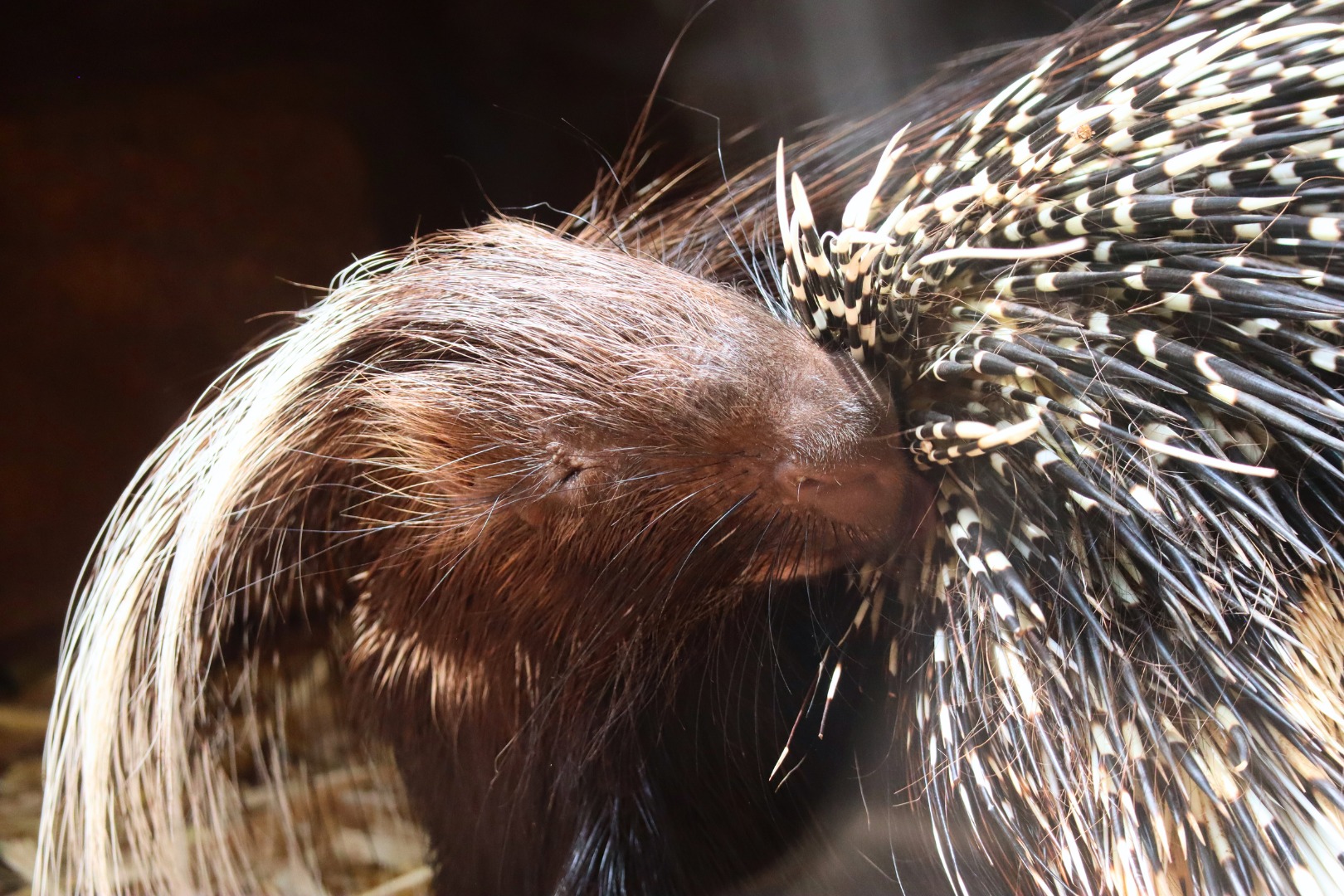- Celebrating Abasi’s 5th Birthday: A Milestone for the Cape Porcupine at Fort Wayne Children’s Zoo
- Understanding the Biology and Behavior of the Cape Porcupine
- The Role of Zoo Management in Caring for Cape Porcupines
- Conservation Efforts and Education Programs at Fort Wayne Children’s Zoo
- Engaging the Public with Wildlife Conservation through Abasi’s Story
Celebrating Abasi’s 5th Birthday: A Milestone for the Cape Porcupine at Fort Wayne Children’s Zoo
The spotlight shone brightly on Abasi this month as he turned five at the Fort Wayne Children’s Zoo. Being the star of the zoo’s Cape porcupine exhibit, Abasi’s birthday is not just an occasion for celebration but also an opportunity to understand more about this remarkable species and the intricate aspects of zoo management and wildlife conservation.
Understanding the Biology and Behavior of the Cape Porcupine
Cape porcupines, scientifically known as Hystrix africaeaustralis, are native to the Southern and Central African regions. They are known for their impressive quills, growing up to 20 inches long and serving as their primary defense mechanism against predators. These quills comprise keratin, the protein that makes up human hair and nails. When threatened, the Cape porcupine raises its quills and rattles them to deter attackers.
Cape porcupines are nocturnal and primarily herbivorous, feeding on roots, tubers, bark, and fruit. They are known to gnaw on bones to obtain calcium and sharpen their incisors. Socially, Cape porcupines are monogamous and live in family groups. They dig burrows for shelter, which can be extensive and protect them from predators and harsh weather.
The Role of Zoo Management in Caring for Cape Porcupines
Effective zoo management is crucial to ensuring the health and well-being of animals such as Abasi. At Fort Wayne Children’s Zoo, the primary focus is providing an environment that mimics the natural habitat of the Cape porcupine. This includes climate control, diet regulation, and enriched habitats that encourage natural behaviors.
The diet of a Cape porcupine is carefully managed to meet their nutritional needs. Fresh fruits, vegetables, and high-fiber pellets are staples, supplemented with occasional treats that provide mental stimulation. Routine veterinary care is also paramount. Regular check-ups help monitor Abasi’s health, promptly addressing any potential issues.
Enrichment programs play a critical role in zoo management. For Abasi, this could include hiding food to encourage foraging, providing new scents and objects for exploration, and incorporating various substrates for digging. These activities keep him physically and mentally engaged, reducing stereotypic behaviors often seen in captivity.
Conservation Efforts and Education Programs at Fort Wayne Children’s Zoo
While not currently endangered, Cape porcupines benefit significantly from conservation efforts aimed at preserving their natural habitats and educating the public. Fort Wayne Children’s Zoo is actively involved in various conservation programs that contribute to the well-being of numerous wildlife species, including Cape porcupines.
Educational programs are designed to inform visitors about species like Abasi’s biological and ecological significance. These programs often feature interactive exhibits, behind-the-scenes tours, and talks by zoo staff. The goal is to bring awareness to conservation issues and inspire visitors to participate in wildlife preservation initiatives.
Engaging the Public with Wildlife Conservation through Abasi’s Story
Abasi’s birthday celebration is more than just a festivity; it serves as an educational moment to engage the public with wildlife conservation. The zoo fosters a connection between visitors and the natural world by narrating Abasi’s journey and highlighting the Cape porcupine’s unique characteristics.
Social media plays a vital role in this engagement. Photos, videos, and updates about Abasi spark interest and create a sense of attachment among followers. This digital interaction extends the zoo’s reach, allowing them to educate and motivate a broader audience.
In-person experiences at the zoo also leave lasting impressions. Visitors gain a deeper understanding of the importance of preserving wildlife by witnessing Abasi’s daily activities and learning about his species. The zoo’s educational staff effectively conveys conservation messages, ensuring visitors leave with valuable knowledge and a sense of responsibility toward protecting animals and their habitats.
In summary, Abasi’s 5th birthday celebration at Fort Wayne Children’s Zoo encapsulates the essence of wildlife conservation, education, and zoo management. Every aspect of Abasi’s care, from his diet to his enriched habitat, reflects the zoo’s commitment to animal welfare and conservation. Through innovative educational programs and engaging public interactions, the zoo celebrates milestones and instills a lasting appreciation for wildlife among its visitors.
*****
Source Description
Spiking your feed with the sharpest birthday boy at the Fort Wayne Children’s Zoo! Happy 5th Birthday to Abasi, the cape porcupine. 🎉


